5 Great Classic Lenses for the Nikon FM3A
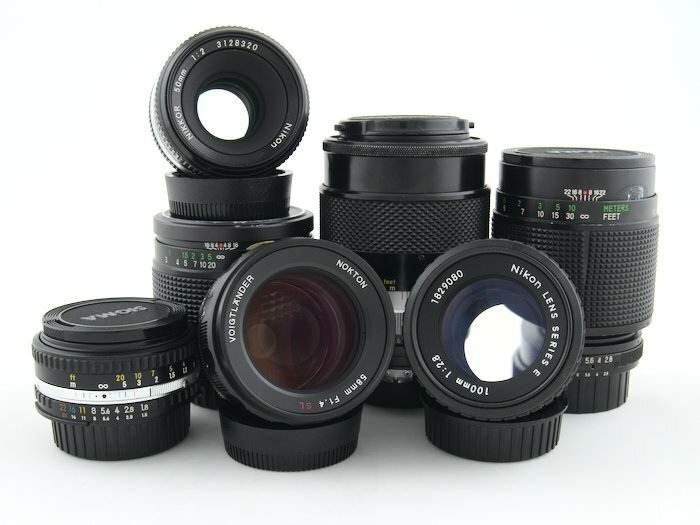
Get the most out of your Nikon FM3A by pairing it with the right lens.
I am going to focus on Ai and Ai-S lenses, as they will be the most enjoyable to use. AF and D series lenses are compatible, but they aren’t fun to manually focus.
Recommendations are going to be focused on small, lightweight, and inexpensive lenses.
Lens Compatibility
Nikon F-mount Ai, Ai-S, AF, or D series lenses are compatible with the FM3A. Lenses with electronically controlled apertures, such as G-series lenses, are not compatible.
Do not use ’non-Ai’ F-mount lenses. These lenses can damage the camera mount. See the Nikon F-mount lens and camera compatibility page for how to identify ’non-Ai’ F-mount lenses.
Affiliate Advertising Disclosure
Outside the Shot is a participant in the Amazon Services LLC Associates Program, an affiliate advertising program designed to provide a means for sites to earn advertising fees by advertising and linking to Amazon.com.
As an eBay Partner, I may be compensated if you make a purchase. I also participate in affiliate advertising programs with KEH and Adorama. More can be found on the Affiliate Disclosure page.
Here are the best lenses for the Nikon FM3A:
- Standard Lens - Voigtländer Nokton 58mm f/1.4 Lens
- Wide Angle Lens - Nikon Nikkor 24mm f/2.8 Ai
- Portrait Lens - Nikon DC-Nikkor 105mm f/2 D
- Zoom Lens - Vivitar Series 1 70-210mm f/3.5
- Macro Lens - Vivitar 90mm f/2.8
Standard Lenses
There were several kit lenses available when the Nikon FM3A was in production. Those lenses would have been a 50mm f/1.4, f/1.8, and f/2.
A standard lens can be used for all types of photography including portraits, landscapes, travel, architecture, street, and everyday use. Lenses that fall in the 50-60mm focal range are the most popular lenses to use on the Nikon FM3A.
Voigtlander 58mm f/1.4 Noct
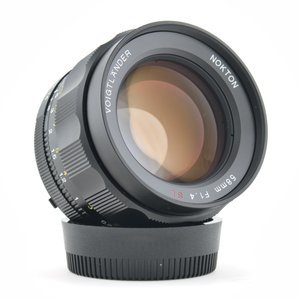
- Exceptional optics.
- Has a Meter Coupling Prong.
- CPU Contacts.
- Can be purchased new.
See current price and more information on:
The Voigtländer 58mm f/1.4 Noct makes the Nikon Nikkor 55mm f/1.2 Ai or 50mm f/1.2 Ai lenses completely irrelevant. The Voigtländer is better in every regard, especially when the condition of the older Nikkor lenses are taken into account.
The Voigtlander 58mm f/1.4 Noct is one of the best lenses ever made for the F-mount. It is going to be difficult to find a better standard focal length lens to use on your Nikon FM3A.
The Voiglander is so good due to the combination of modern optics, manufacturing, and design. It is a manual focus lens, with an incredibly smooth focus ring that you can purchase new.
Additionally, the lens has a meter coupling ridge, CPU contacts, and depending on the version, metering prongs. That means the lens can be natively used on all Nikon F-mount cameras, from film to digital.
This is great for photography enthusiasts, as the lens can be used on film cameras as well as DSLRs. With CPU contacts means you’ll get full EXIF data when used on a DSLR.
Nikon 50mm f/1.8 Series E
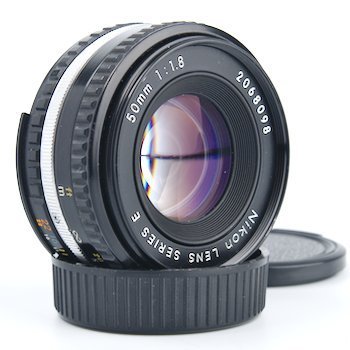
- One of the most popular 50mm lenses Nikon ever made.
- Excellent value.
- Light, small, and compact.
- 52mm filter threads.
See current price and more information on:
Nikon was surprised by the massive popularity of the 50mm f/1.8 E Series lens. It was meant to be a budget option but was popular with everyone from new photographers to professionals.
The second version with a chrome ring around the barrel of the lens is the version to get. They have a better build quality than the first version which is all black.
The lens is small and lightweight which means the FM3A will be easy to handle. It is the perfect lens to leave on the camera so you can just grab it and go.
Nikon Nikkor 50mm f/2 Ai
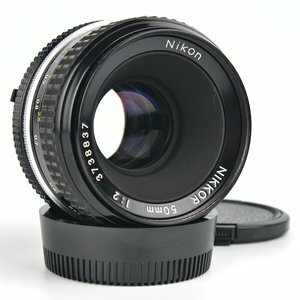
- Sharpest of all the vintage 50mm lenses.
- Optical multi-coatings to improve performance.
- Very easy to find.
- Shockingly inexpensive.
See current price and more information on:
The 50mm f/2 is the sharpest of the vintage Nikon options. At f/2 and further stopped down, this lens is sharper than the other 50mm options.
Obviously, the lens isn’t the best option for low light or if you want razor-thin depth of field. For photography that doesn’t involve that, it is a great choice.
One of the best things is how inexpensive the lens is. Everyone must get caught up in have a large maximum aperture, because seemingly no one wants the lens. That makes it a great option to buy and still have plenty of money left over to buy other lenses.
Wide Angle Lenses
Nikon 24mm f/2.8 Ai
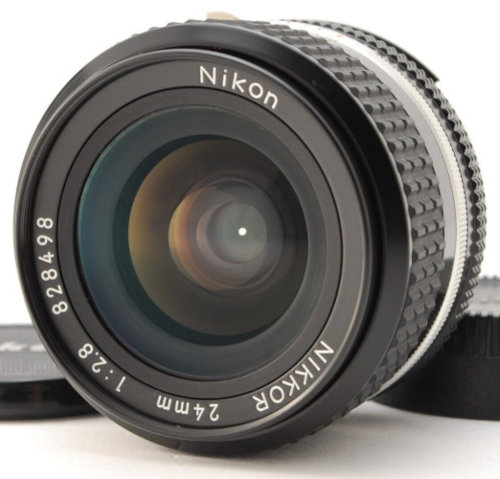
- Great combination with a 50mm lens.
- Optical multi-coatings to improve performance.
- Widely available.
- Relatively low-priced.
See current price and more information on:
The AI, AIS, AF, and D versions of the 24mm lens all use the same optical design. Versions with autofocus will have improved lens coatings, but are not as easy or enjoyable to manually focus on the FM3A.
The Nikon 24mm f/2.8 has the best price-performance ratio of any wide-angle lens for the FM3A. The Nikkor 20mm f/2.8 is also an option but has problems with flare and has more noticeable barrel distortion while also being more expensive.
Wider focal length lenses or lenses that are faster are significantly more expensive. The image quality will not be as good as modern wide angle lenses or vintage medium/large format lenses.
Nikon 28mm f/2.8 Series E
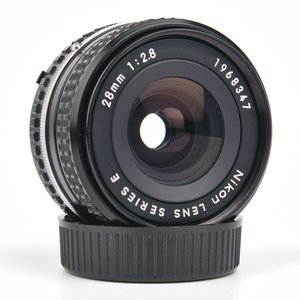
- Good when combined with a 50mm lens.
- Optical multi-coatings to improve output.
- Widely available.
- Inexpensive.
See current price and more information on:
The 28mm sits on the border of what can be considered a wide angle lens. It has been included because it should be available for around half the price of a 24mm lens.
It is a small, light, and compact lens that can easily fit in a pocket. This makes it perfect as part of a small kit.
There are two versions of the lens. The second version is slightly better built and can be identified by the chrome ring around the lens barrel. The first version is all black.
Portrait & Telephoto Lenses
Nikon DC-Nikkor 105mm f/2D
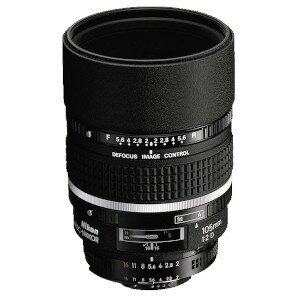
- Has DC - Defocus Control.
- Produced from 1993 until 2016.
- Ridiculous value used.
- Excellent availability.
See current price and more information on:
The DC-Nikkor 105mm f/2D was produced for 23 years. The production lasted well into the time that almost all other lenses had been updated to the G series of lenses.
The DC stands for ‘Defocus Image Control’ which allows you to control how out of focus the background is. This is a somewhat unique feature that provides some control over bokeh. Another lens with this feature is the DC-Nikkor 135mm f/2D.
What surprised me is that the DC-Nikkor 105mm f/2D can be found used for around the same price as the Nikkor 85mm f/1.4 Ai.
Nikon 85mm f/1.4 Ai
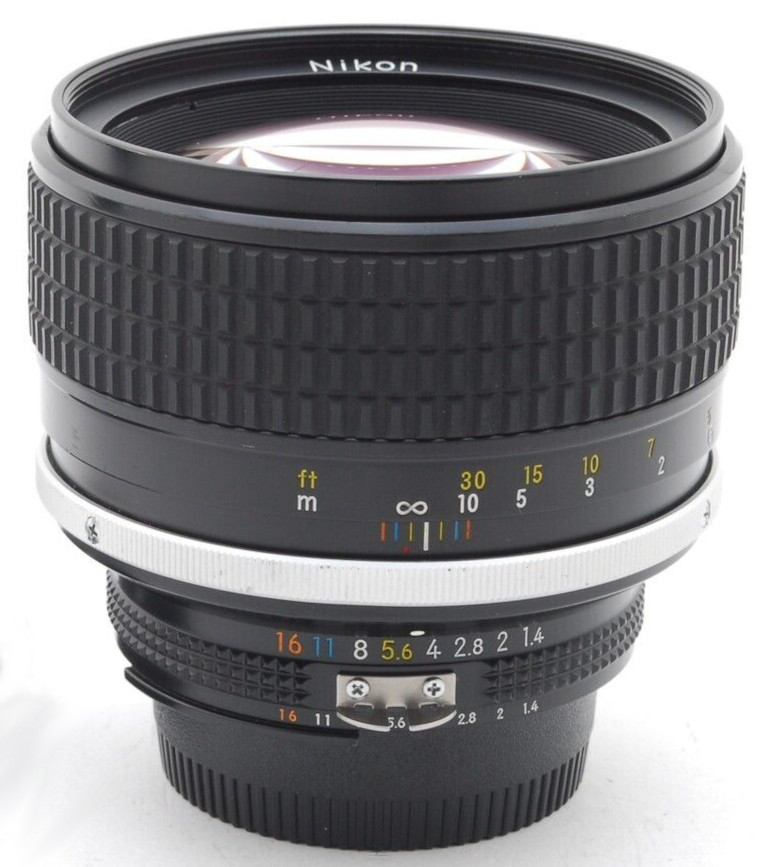
- Overpriced.
- Hard to find in good condition.
- Same optical design as the 85mm f/1.4 D series.
See current price and more information on:
I don’t shoot portraits. Even if I did, I wouldn’t buy any of the vintage 85mm f/1.4 lenses. It doesn’t matter the manufacturer, if it is a vintage 85mm f/1.4, it’s overpriced.
For several years the 85mm f/1.4 could be found around $500. As I’m writing this, prices are climbing over $700.
That’s nowhere close to being a good value. Haze and dried out helicoid grease are common problems with these lenses due to their age. Lenses described as being in “excellent condition” will not live up to that description.
The lens was included because I know people are going to ask about 85mm lenses and buy them regardless of how bad of a decision that will be.
Nikon also made 85mm f/1.8 and 85mm f/2 lenses which have more reasonable prices. You will need to pay close attension to the condition of the lenses, as they will likely have issues.
Another thing to keep in mind is that the D series autofocus lenses use the same optical design. They are newer, which will make it easier to find a lens in good condition.
If you want a longer focal length and don’t mind carrying around a boat anchor of a lens, the Nikon Nikkor 300mm f/2.8 Ai is also in the same price range.
Nikon 100mm f/2.8 Series E Lens
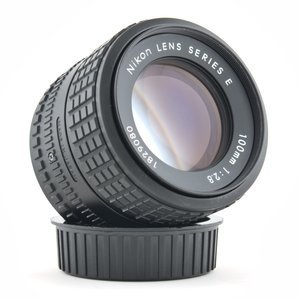
- 85mm alternative.
- Good value.
- Relatively inexpensive.
- Many copies are available.
See current price and more information on:
85mm lenses were not as commonly used as they are today compared to before autofocus lenses took over. 135mm or 100mm focal lengths were more common because they were less expensive to produce.
Just like all of the other Series E lenses listed, the 100mm f/2.8 has a good balance of value, functionality, and performance. It will be well balanced on the FM3A.
It was a popular lens which is why it is easy to find a used copy in good condition today.
Another option that is similar in price is the Nikon 135mm f/2.8 AIS.
Zoom Lenses
Before autofocus took over, in the early 1980s, there were a small number of lenses made by third-party manufacturers that performed better than what Nikon was producing.
A bunch of these lenses were released under the Vivitar brand in the United States. Any zoom lens that has the Vivitar Series 1 branding on it is going to have the best optics you can get from a vintage manual focus zoom lens.
Finding copies of these lenses in good condition can be extremely difficult. Additionally, no vintage zooms offer outstanding performance. If you see one for sale that is cheap enough, it may be worth picking up.
Vivitar Series 1 70-210mm f/3.5
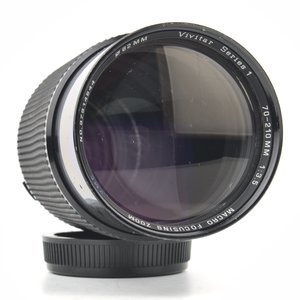
- Covers a popular zoom range.
- Good for portrait or wildlife photography.
- A rare example of when a third-party lens is the best.
See current price and more information on:
The image quality of this lens is going to be better than any Nikon counterpart. Though, the fit and finish will not be as good.
If you want sharp photos, you will have to stop the lens down to f/5.6, which you’ll have to do with any vintage zoom. There are no intermediate aperture stops between f/3.5 and f/5.6.
That also means that the lens is not well suited for low light photography, such as indoor shooting without a flash.
The lens is available in a variety of camera mounts. If you decide to buy one, double-check to be sure that it has a Nikon F mount.
Vivitar Series 1 28-90mm f/2.8-3.5
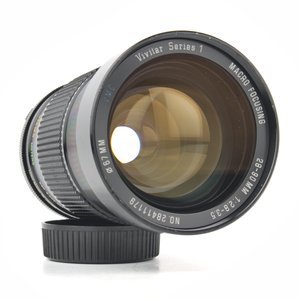
- Covers a useful zoom range.
- Great for everyday general photography.
- A rare time when a third-party lens is the better choice.
See current price and more information on:
Depending on the type of photography you want to do, this lens could have a better zoom range.
However, a 28mm Series E lens plus either the 50mm or 100mm will cover the zoom range. They’ll also be lighter and have better image quality.
Nikon Macro Lenses
For capturing photos at macro magnification (1x), focal lengths in the 90mm-105mm range will be the best choice.
You’ll have a large enough working distance to be able to use flash, while avoiding excessive weight and high costs that come with longer focal length macro lenses.
All of the vintage 50mm and 55mm Nikon macro lenses require the use of extension tubes to reach 1x magnification.
Vivitar 90mm f/2.8 Macro Lens
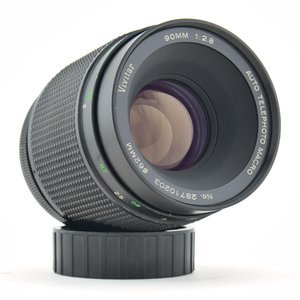
- The best vintage macro lens I've used.
- Available in multiple lens mounts.
- Incredible value.
See current price and more information on:
My favorite vintage macro, the 90mm Vivitar, was made with several different camera mounts. It is not difficult to find a lens with a Nikon F mount.
The lens is ideal for shooting macro at 1:1 magnification because you’ll get around 3 inches of working distance. The working distance being the distance from the front of the lens to the subject.
This one and the other Vivitar macro below were made by Komine and were released under several different brands. If you decide to search for one also look under the Panagor, Elicar, Quantaray, Spiratone, and Rokunar brand names.
There is a Vivitar 90mm Macro Review and a Vivitar 55mm Macro Review.
Vivitar 55mm f/2.8 Macro Lens
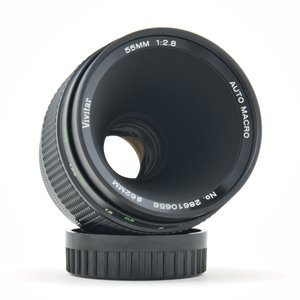
- The second best vintage macro lens I've used.
- A good lens for close-up photography.
- It doesn't need an extension tube to achieve life-size magnification.
See current price and more information on:
The Vivitar 55mm is an excellent choice for close-up photography. Things such as copy work, nature, and tabletop photography.
At 1x magnification, the small amount of working distance becomes an annoyance. The upside to that is that at 0.5x magnification you can still be within arms reach of the subject.
There is an earlier f/3 version of the lens that is not sharp. The f/2.8 version is significantly sharper.
Used Nikon Lenses
Prices change all the time depending on supply and interest in film photography and manual focus lenses.
During the last several years, film photography was going through an increase in popularity, which has pushed prices higher.
What Lens Mount Does the Nikon FM3A Use?
The Nikon FM3A uses the Nikon F lens mount. The F-mount has been in use since 1959. Over time changes have been made to add metering information, autofocus, electronic aperture control, and CPU contacts.
Use manual focus lenses listed as either Ai-S or Ai with the FM3A. The meter coupling ridge on those lenses will allow the camera to meter accurately.
Do not attempt to use ’non-Ai’ lenses on the Nikon FM3A as they will cause damage. For an explanation of the differences between lenses, see the Nikon F-mount lens and camera compatibility page.
Standard Lens Cap Size
The standard lens cap and filter ring thread diameter for just about all vintage Nikon lenses is 52mm. Keep in mind, lenses with big front elements are going to need larger lens caps and filters.
Employing a standard filter thread diameter is useful because you only need to buy only one set of filters.
Non-Ai vs Ai & Ai-S Lenses
Earlier F-mount Nikon cameras had a Meter Coupling Prong. The Nikon FM3A uses a Meter Coupling Ridge.
Lenses built around the time when Nikon changed to Ai lenses can have both forms of meter coupling.
Non-Ai lenses do not have a notch cut out at the outer base of the lens mount which will damage your FM3A if you attempt to put one on the camera.